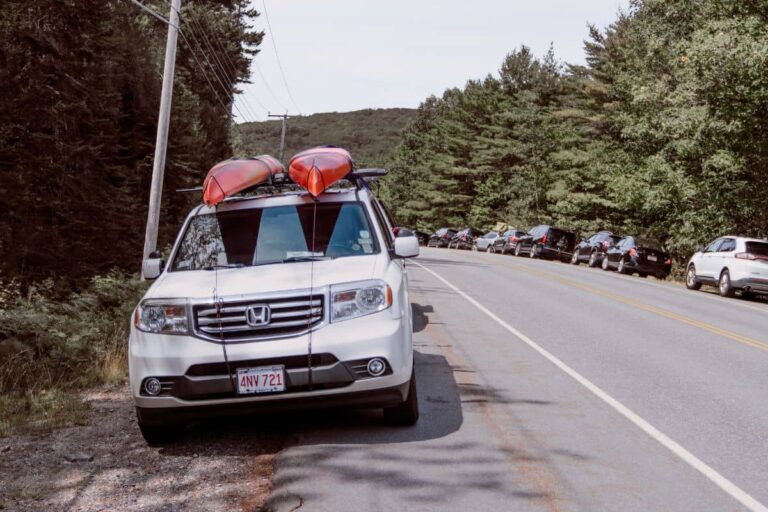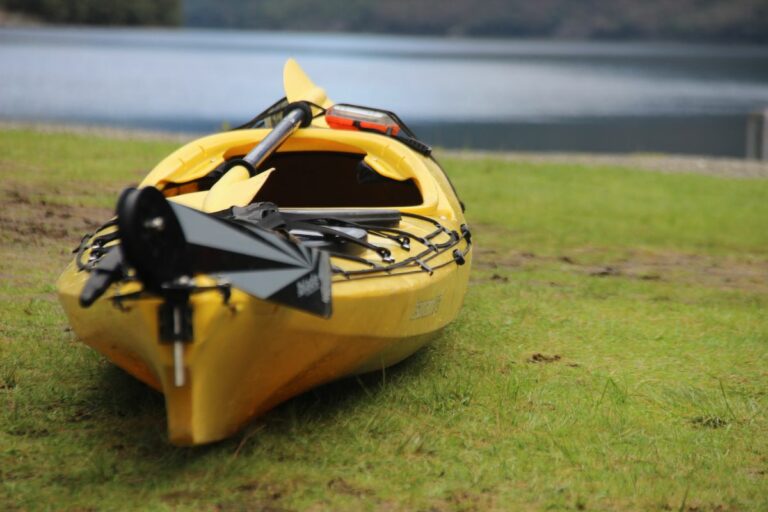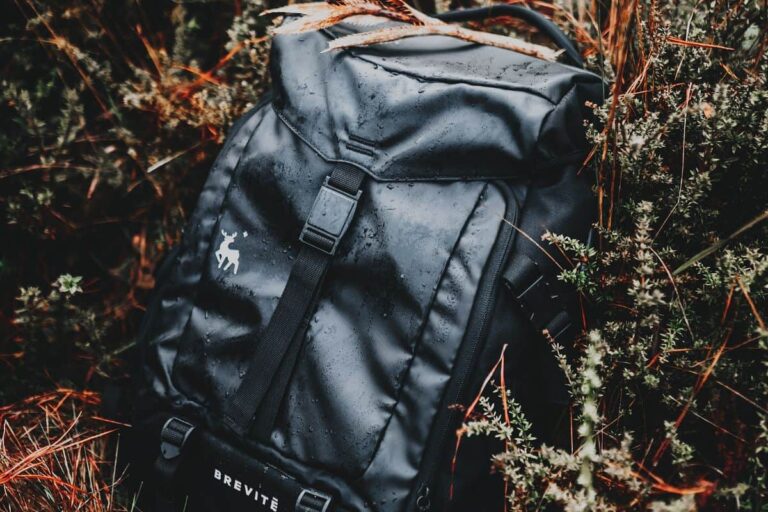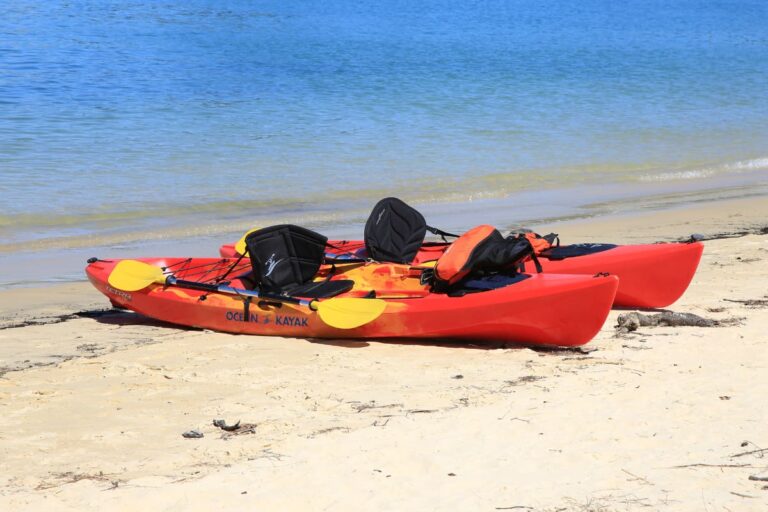What Size Kayak Do You Need?
If you’re interested in joining the fun and buying a high-quality kayak, choosing one that fits your needs is crucial. Before purchasing a kayak, consider what you want to use it for.
So how do you know what size kayak to get?
In most cases, the best recreational kayaks range in size from around 12-16 feet long, and your choice depends on several factors including your height, weight, strength, skill level, and how you plan to use your kayak. It’s important to choose the right size kayak for your needs in order to minimize any dangers that can accompany kayaking.
Determining Your Kayaking Needs
In most cases, the best recreational kayaks are around 12-16 feet long. The size you choose will depend on your height, weight, and how you plan to use your kayak.
Understanding these factors can help you better understand which size kayak you should choose. Choosing the right size kayak can also minimize any dangers you may encounter by taking a recreational kayak out in the wrong situation.
Many people know they can choose either a “sit-in” kayak or a “sit-on-top” kayak. But did you also know that there are fishing kayaks, sea kayaks, tandem kayaks, whitewater kayaks, touring kayaks, and more?
Over the years, using kayaks and canoes have become increasingly popular hobbies. Between 2004 to 2017, the number of registered kayaks and canoes rose to a staggering 492,420.
Keep in mind that there are probably double that number of unregistered kayaks and canoes. In that case, we’re actually looking at close to 1.5 million kayaks and canoes, in a nation of over 332 million people, that comes to around one kayak per every 30 people.
Do you want to go out on the water in a fishing kayak to catch dinner? Or does the idea of a tandem kayak catch your eye as a great date night activity?
Are you more of an adventure lover who is considering a sea kayaking adventure to channel your inner pirate? Or maybe you’re looking at inflatable kayaks for easy transportation.
Unfortunately, too many people buy kayaks that are far too long or too short, or even for the wrong type of recreation, and end up disappointed with their purchase.
This intensive guide will give you a better understanding of important factors including your intended kayak usage, height, weight, and many other essential determinants. We will also help you answer the question: “What kind of kayak do I need?”
Available Kayak Lengths
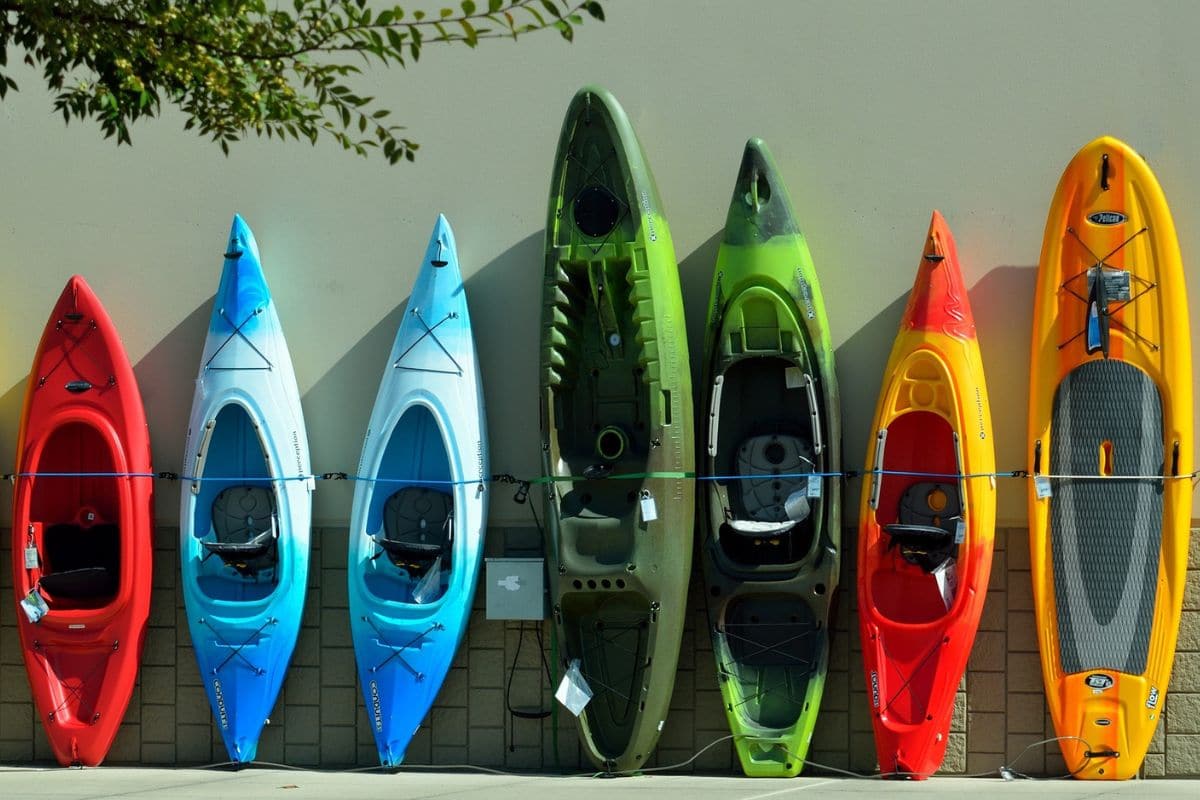
Kayak dimensions come in three different classes: Recreational, Light-touring, and Touring kayaks. Let’s break down the characteristics for each of these types of kayaks so you can get a better idea of what to expect from each one, and what size kayak you’ll need:
- Recreational Kayak – Length is less than 12 feet; width is greater than 24 inches; weighs less than 50 pounds. Designed for stability and a variety of uses, especially in calm water.
- Light-Touring Kayak – Lengths range from 12-16 feet; widths from 22-25 inches; weights around 50-70 pounds. Outstanding balance between recreational and touring kayaks, and work wells in both still and slightly rough waters.
- Touring Kayak – Length is greater than 16 feet; width is 22 or fewer inches; weighs 70 pounds or more. Useful for more difficult or advanced excursions, such as whitewater rapids, and rarely used for recreational purposes.
Within these three classes, there exist many subcategories of kayaks. Each option is designed for specific uses, and suits the specific needs of people. Just a few of the most common subcategories to consider include:
- White Water – 7 feet, Designed for Rough Water Usage
- Youth Recreation – 8 feet, Designed for Younger Users
- Sit-Down Recreation – 10 feet, Perfect for Most Recreational Uses
- Tandem Kayak – 12 feet, Great for Recreational Multi-Person Use
- Fishing Tandem – 14 feet, Designed for Fishing Experiences
- Ocean Surf – 17 feet, Suitable for Rough Water
Within each of these subcategories, you also have the option of purchasing either a sit-on-top kayak or a sit-in kayak. How do you know which of these options is right for you?
Most recreational kayaks are between 12 and 16 feet long, and work well for beginner kayakers. However, your own personal kayak experience and use must also be considered.
Additionally, you need to take into consideration your height and weight when choosing among different types of kayaks.
Kayak Use Is Critical To Consider
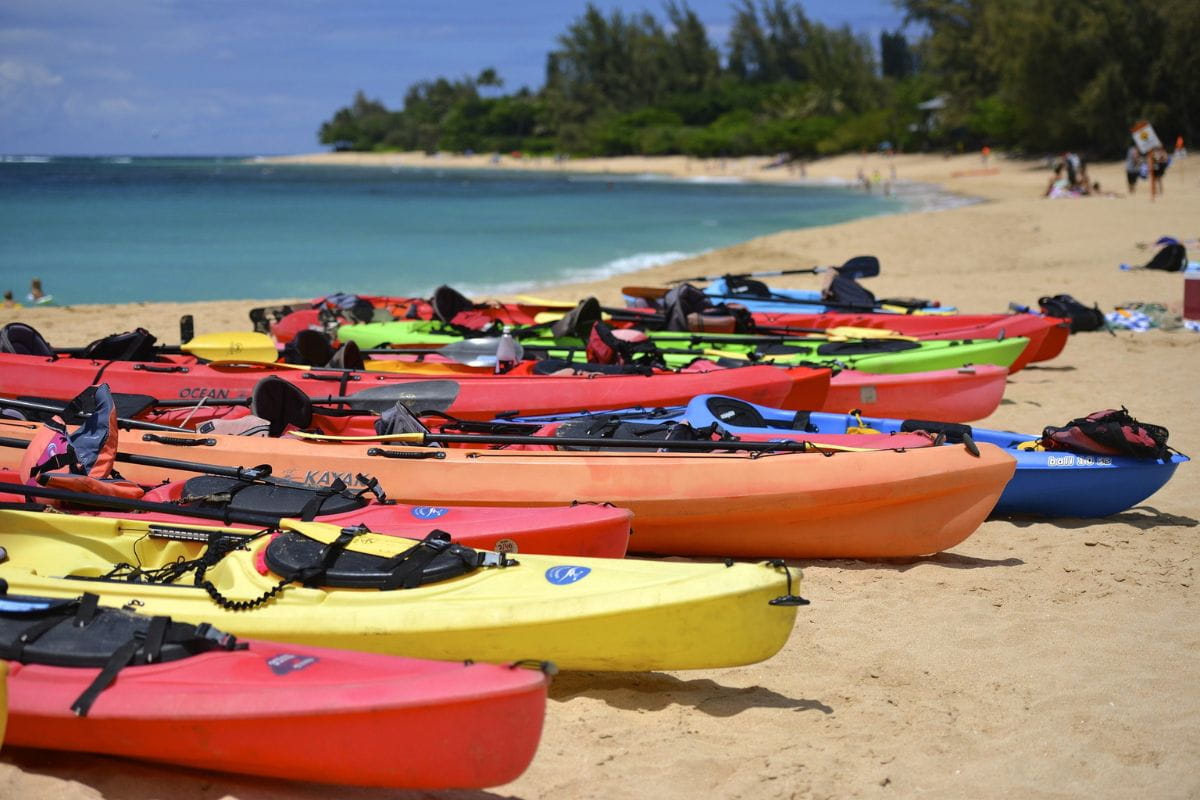
Start by asking yourself how you plan on using your kayak before making your purchase. Typically, longer kayaks tend to handle better on rougher waters.
When you’re looking at ocean kayaks, it’s a great idea to consider a sit-on-top kayak. Sit-on-top models are less likely to fill with water if you capsize, and they’re much easier to climb back onto if you fall off.
What about length? The smallest kayak recommended for ocean kayaking is around 12 feet long. However, most people kayaking on the sea will need a model closer to 16-17 feet, and even 20-foot models are not uncommon for ocean use.
The exception to this rule is whitewater kayaking. Shorter whitewater kayaks are more suitable in this case because they provide you with a faster reaction speed.
A long kayak’s initial stability would be unwieldy in whitewater settings because of the high–speed situations. A longer kayak could impede its ability to avoid capsizing. Therefore, most people opt for kayaks measuring about six feet in length for whitewater rafting.
Those with limited kayaking experience who are looking for more recreational paddling can probably get by with creek boats that are between 12 and 16 feet long. This sweet spot provides you with a stable kayak that offers a steady amount of control over the water while minimizing your risk of capsizing.
This type of kayak’s stability is great for bodies of water such as still lakes, slow-to -fast-moving rivers without rapids, and even some types of low-key competitions.
It also is crucial for novice kayakers to consider both their height and weight when narrowing down your kayak choices. Kayak cockpits that are long enough for your body will keep you more comfortable and allow for easier operation.
The following information will help you choose a kayak that is right for your body type.
How Your Height And Weight Determine The Right Kayak Length and Width
Once you’ve narrowed down the range of kayak sizes based on your intended use, now it’s time to gauge your height and weight, and choose a model that fits your body type. For example, a shorter and lighter person who plans to kayak recreationally can aim for shorter and low-volume kayaks.
Those who are heavier or taller typically need higher kayak volume options. These options vary as follows:
- Low-Volume Kayak – Suitable for people under 5’6” and under 140 pounds. Typically, this low-volume option is suitable for day excursions when you have little or no extra gear to haul.
- Medium-Volume Kayak – Suitable for people between 5’7” and 5’10”, and between 150-180 pounds. This type may work well for overnight trips, as long as you don’t have an excessive amount of gear.
- High-Volume Kayak – Suggested for people over 5’10” and over 180 pounds. Recommended for larger paddlers. These kayaks also allow you to take a heavy amount of gear, and make longer trips (even week-long vacations) possible.
It’s important to have a good amount of legroom for your kayak, meaning enough room so that your kayak provides maximum comfort and maneuverability. We suggest having as much legroom as possible, because this helps improve your stability and overall speed.
If you choose a sit-inside kayak, it should include a cockpit that offers at least one foot of wiggle room both along the length and width of the kayak. Adjustable foot pegs offer an additional source of customized comfort.
As mentioned above, kayak types will dictate how much room you have because the length and width of your model will vary. The cockpit sizes of longer models are usually narrower and designed for more speed-oriented situations.
Sit-in kayaks tend to be more comfortable than sit-on-top kayaks, especially for people with long legs. Sit-in kayaks also offer more storage space in the cockpit, and they are likely to keep both you and your gear drier than sit-on-top kayaks.
Shorter kayaks have increased width in order to boost the kayak’s stability and strength. That said, it’s not uncommon to find 17-foot kayaks with a broad range (up to 34.5 inches) of width for both stability and speed.
All of these factors tie into the overall volume of your kayak as well. The higher the volume, the bigger the cockpit size, meaning you’ll have more actual space for yourself and storage.
Longer and broader boats are high-volume kayaks, which provide more stability and flotation on the water. The kayak volume ratings typically vary based on your boat’s size, so check this factor carefully before choosing.
The Amount Of Gear You Bring Also Dictates Your Kayak Size
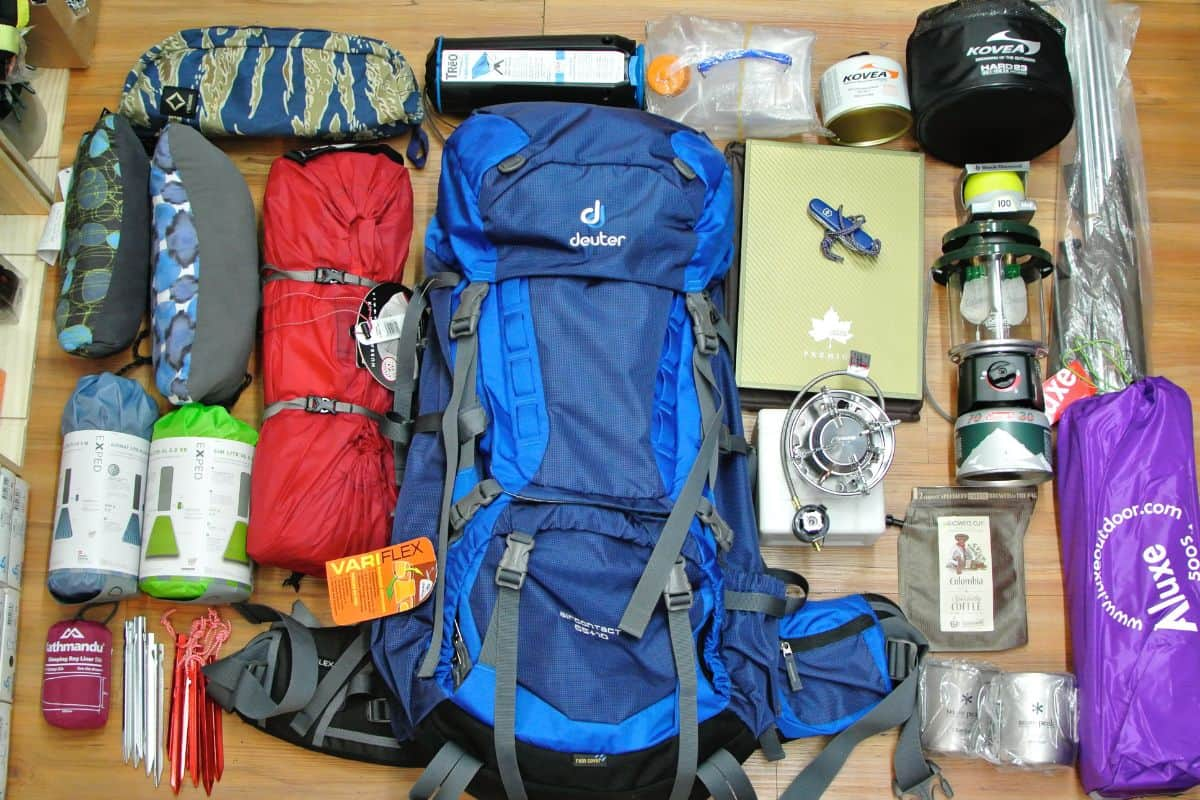
Kayaks vary not just in length and volume, but also when it comes to maximum weight capacity. Each kayak’s capacity encompasses each paddler’s weight in addition to the overall amount of gear inside the kayak.
This can be especially important to consider when purchasing fishing kayaks, since fishing gear will always need to be included in the weight consideration. However, even if you plan to use a recreational kayak, the weight of your average snacks, water, and extra accessories need to be factored in as well.
So, for example, a 300-pound load capacity does not mean that an individual who weighs 300 pounds can use that particular kayak. Instead, it means that for that size kayak, 300 pounds includes the total weight the kayak can carry, including gear.
A good rule of thumb is to weigh your gear before buying a kayak, and add that weight to your body weight(s). Most shops recommend factoring in between 20-50 extra pounds of gear weight for most kayak owners.
It’s also important to understand that maximum weight capacity doesn’t mean that you should aim to pack the kayak up to that limit. Doing so is likely to cause the flat hull to sag in the water, and can cause a decrease in the kayak’s overall performance.
Instead, it is a good idea to keep the total weight in your kayak at about 30% under the kayak’s total weight capacity. Let’s take a brief look at a simple calculation to get an idea of how you can figure this out yourself.
Let’s say you buy a 300-pound total capacity kayak. Calculating 30% (0.30 x 300) gives you 90 pounds, then subtract that from the weight capacity (300-90) to get 210 pounds.
Note that these 210 pounds include your body weight and the weight of your gear combined. You’re probably safe if you go a little over this level, of course.
However, that will also vary based on how rough the waters are. For instance, a slightly over-weighed kayak (such as one that’s at 220 or 230 pounds on a 300-pound capacity kayak) is probably safe on still waters, but may present an issue on rougher waters.
Here’s an accurate rule of thumb that should keep you safe: aim for a kayak with a capacity of about 125 pounds more than your body weight. So, if you weigh 200 pounds, you’d need a 325-pound capacity kayak.
Most kayak makers produce kayaks with capacities up to 450 pounds. You may also find a specialized manufacturer who creates kayaks for heavier set individuals.
A tandem kayak will often have an average weight limit of around 500-600 pounds, while your average touring kayak will likely have a weight limit of around 350 pounds.
The average sit-in kayak tends to have a lower weight limit than a sit-on-top kayak, with the latter having a weight limit of 350-400 pounds.
Your Strength And Skill Level Also Matter
Kayaking is a challenging sport that requires a lot of physical strength.
This is why it’s essential to avoid overloading your kayak or choosing one that is too heavy for your strength and ability.
If your kayak is too heavy, you may find yourself struggling to control your kayak or running into problematic situations.
For instance, if your kayak’s weight capacity is too much for your strength, you may find it hard to paddle and gain any speed.
You may also struggle to execute strong turns or have a hard time getting your kayak to stop.
Pedal kayaks, sometimes known as “foot kayaks”, are a fun option for kayakers who may not have the arm strength to handle their kayak’s weight limit solely through paddling.
Rod holders can also be helpful to give your arms a break every once in a while. Another useful factor to consider is paddle length.
Paddles that are too long for your kayak’s size can be unnecessarily difficult to control.
Additionally, some find it easier to paddle in sit-on-top kayaks, while others find sit-kayaks to be easier to navigate.
This particular factor is hard to quantify because there’s no numeric way to measure your strength and convert that into a simple-to-understand kayak measurement.
It’s best to experiment with a few models before you find the sweet spot when it comes to your ideal kayak.
We strongly recommend renting a few kayaks, or borrowing from friends, before purchasing your own.
Experiment with various types, and see how well they fit your overall strength and handling capabilities.
Once you feel comfortable with a specific kayak model, try to find one that meets your usage, height, and weight needs.
If you find that your strength is not up to handling the kayak size that minimizes your risk of capsizing, you may need to improve your overall physical health.
All of the above considerations will help you avoid seriously hurting yourself.
Is There A “Right” Overall Kayak Length?
The ideal range for your kayak will depend on many factors, including your center of gravity and physical fitness level. However, a good medium-range that should work for most people is around 12-16 feet.
This range works well in various outdoor environments, as well as for most height and weight ranges. That said, there is no one-size-fits-all option for kayaks.
Everybody’s weight and height will vary, so this must be factored in when considering different kayak sizes and styles. So instead, consider the above elements and aim for a kayak that falls within the best range for your needs.
Is It Better For A Kayak To Be Too Long Or Too Short?
You should aim for the most stable kayak possible for your needs, and never use one that is too short. If your kayak is too short or light, you could quickly capsize it or end up too close to the waterline.
That said, longer kayaks that are too big may be difficult to handle, both in and out of the water. Finding the sweet spot here does take some work, but is by no means impossible.
Your kayak’s cockpit should be big enough that you have suitable leg room and storage space. The cockpit sizes will vary somewhat from brand to brand, so shopping around is helpful.
You need to carefully consider the above mentioned specifications, and find a kayak that works with your center of gravity in order to minimize any problems. Doing so will give you the best chance of avoiding issues, like constant water immersion.
Where Can I Find A Kayak?
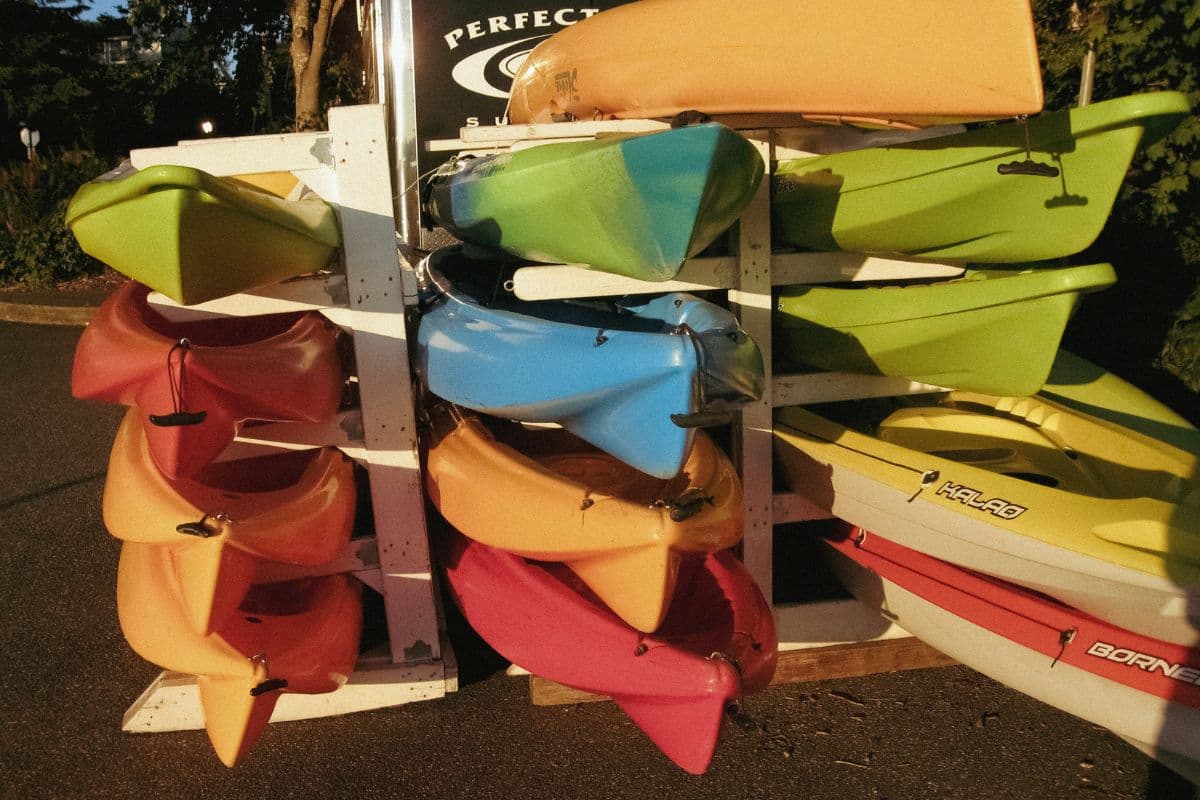
Kayaks are available at most sporting goods stores. Visiting a physical brick-and-mortar shop is usually a great idea, because this will allow you to see the physical kayak and get an idea of its overall size in-person.
Some stores will even allow you to get inside the display models, depending on the store.
Online shopping is also an option, but is only recommended if you know exactly what you want, and you feel sufficiently comfortable with your purchasing decision. It’s hard to gauge kayak sizes online, though you can often find some of the best deals by seeking out specialized shops and sales online.
Where Should A Properly Chosen Kayak Sit On The Water?
When you get into a kayak, the water should not be too high on the sides. We typically find that you want the water well below the crest of your kayak.
The water line should be at least 2-3 inches or more below this crest to give you ample safety room if the waves get big during your trip.
If your kayak is too small for your height and weight, it will likely sink deeper into the water. On still lakes with minimal waves, you’ll probably be just fine as long as the water doesn’t sweep up into the cockpit.
However, if you find that the waves are constantly splashing into your cockpit, your kayak may be too small.
Should I Get Help From A Professional Kayak Team?
After reading this list, it should be reasonably easy to determine the best kayak for your needs. However, we know that some people may also find this process trickier than others.
That’s why we always suggest working with a professional kayak team when buying one of these pieces of watercraft. Professional experts can factor in any information you share (such as your experience, height, weight, and intended use) to help ensure that you buy the best model for your needs.
Are Multi-Person Kayaks A Good Choice?
If you plan on kayaking with multiple people, you may enjoy a tandem model. These options are longer and can typically hold a larger amount of weight.
For example, a tandem kayak is a good option for an outdoorsy couple that likes being close to each other while they kayak. It also works well for those who want to cut back on expenses.
Just as importantly, a multi-person kayak is an excellent option for competition. If you plan on participating in kayak races and other events, you might find a multi-person kayak works well for you.
Additional Thoughts
In addition to the sizes and other varieties we’ve covered, there are also other things to consider, like the benefits of pontoon hulls compared to rounded hulls.
The best way to figure out what you prefer is by trying a variety of kayaks until you find the one that works best for you.
It’s also important to ensure that your kayak meets your budgetary needs. How much can you afford to spend on a kayak?
How often do you plan on using it? Are there payment plans available to make them more affordable?
Conclusion
By this point, we hope you feel very comfortable choosing the right kayak for your needs. You may have already shopped around for a few different options and priced the best model for you.
We recommend that you consider renting or borrowing a kayak before purchasing one for yourself. You can typically find kayak rentals near populated areas with lakes and rivers.
Consider all of these points very carefully before you make a purchase. Then, when you feel comfortable, you can buy a fantastic kayak at a price that you can afford.
Table of Contents

